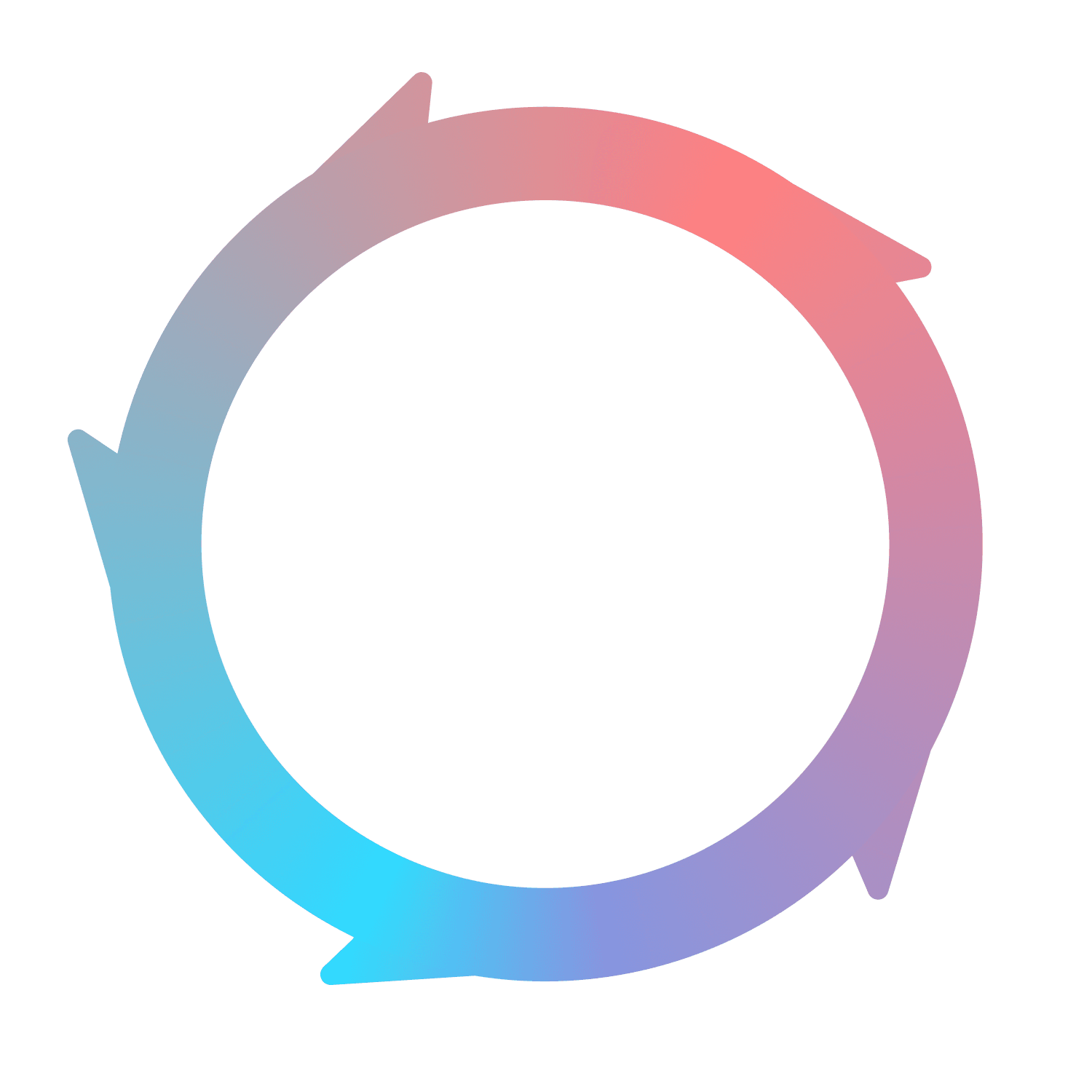
Segment
Connecting Segment to Flywheel
Segment is the best way to send event data to Flywheel. Flywheel works best when Segment sources are set up on marketing sites, in-product, and on any relevant subdomains (such as docs, blogs, help, etc). If it’s a domain where your users or potential users visit, connect it.
Setting up a Segment connection takes just a few seconds. After connecting and choosing a source type for each connection, Flywheel will do everything else for you.
To connect, head to the Integrations page in Flywheel. Or, you can click on the Integrations tab in the left navigation. From there, find the Segment integration card and click Connect.
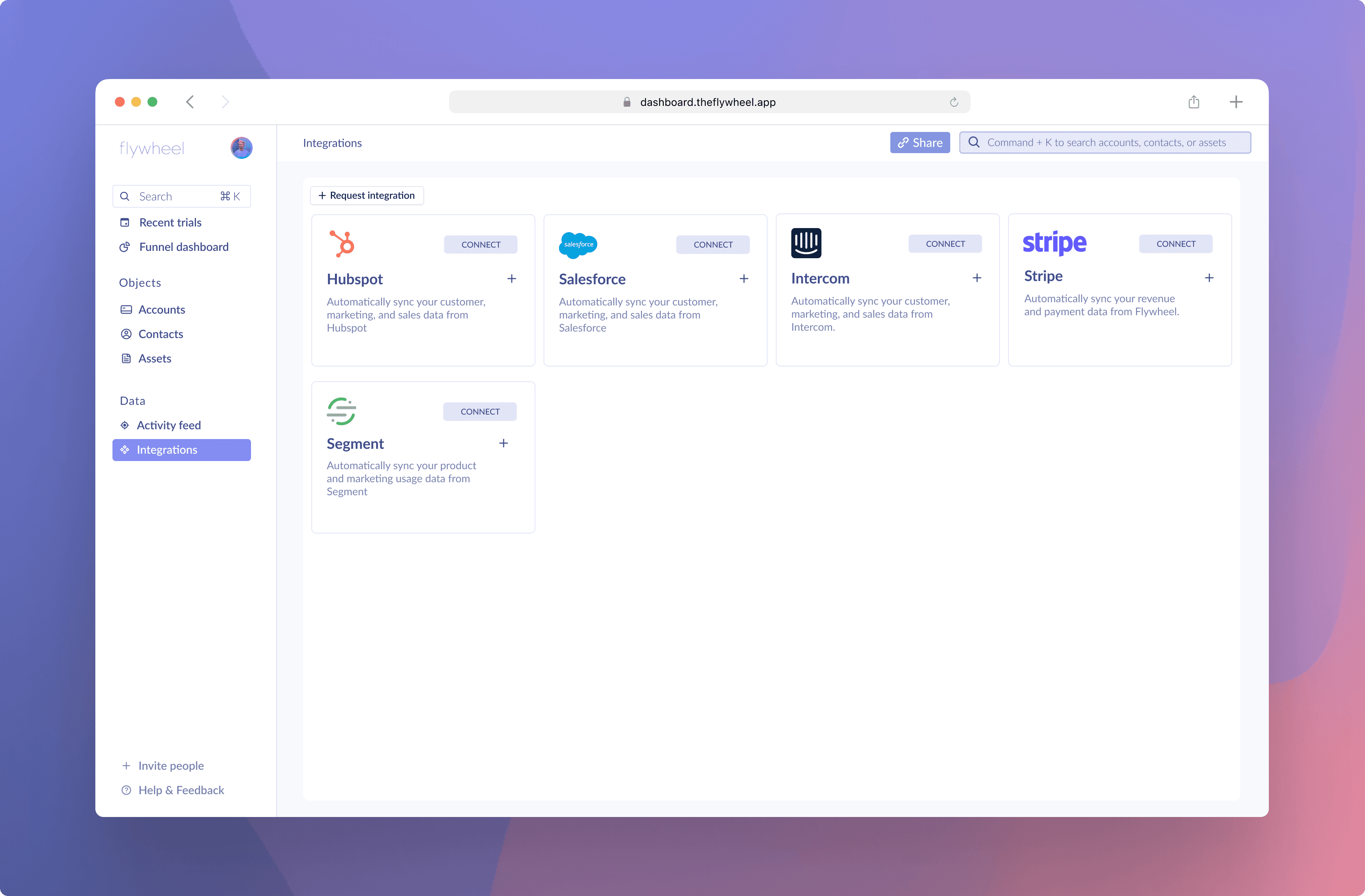
You’ll now be prompted to log into Segment. After doing so, select the Segment source you’d like to connect and click Allow. You’re done!
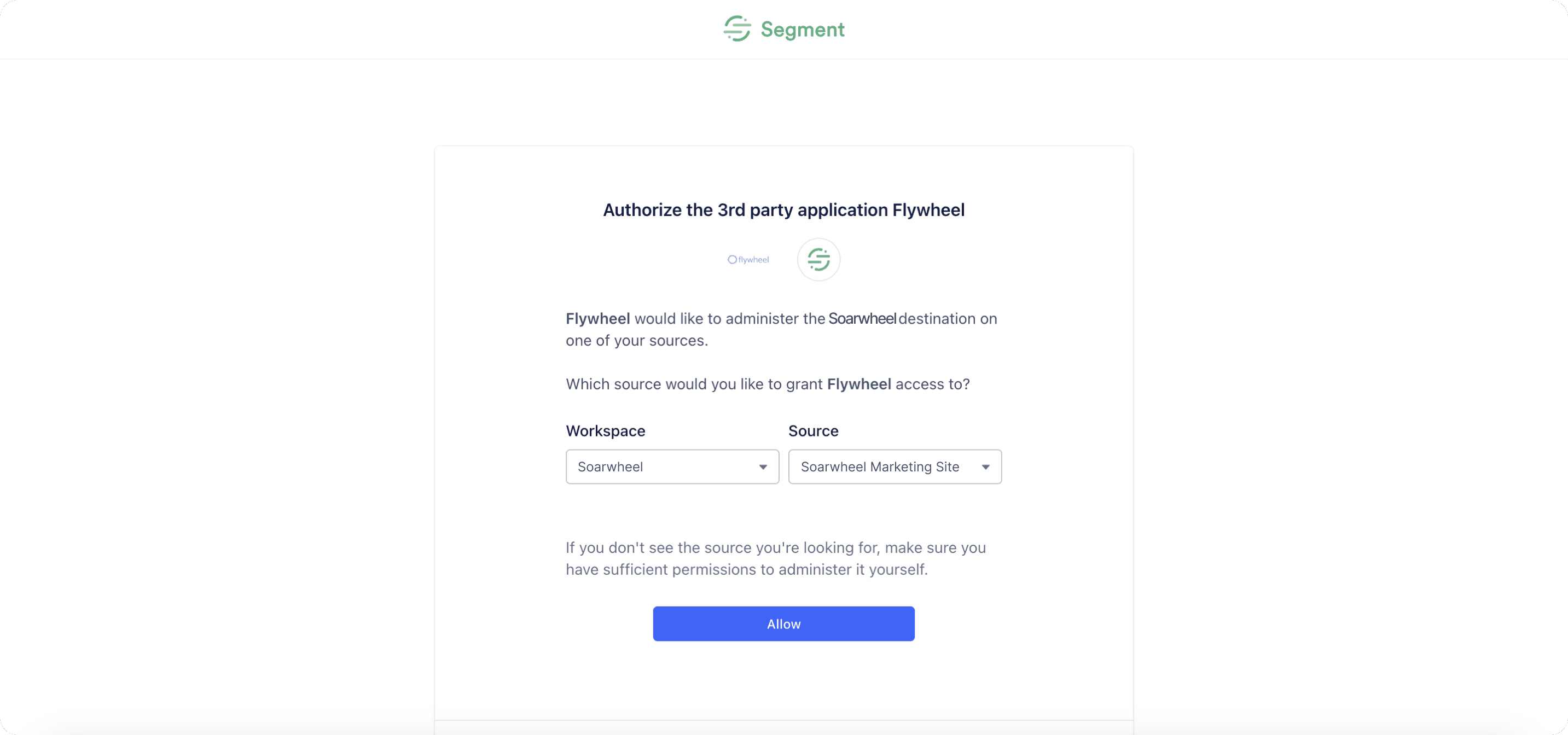
Each Segment source can only be connected to a single Flywheel instance. If you integrate and see a notification that the integration has failed, this Segment source may already be in use by someone else from your company.
Important: Repeat this process for all of your relevant Segment sources, this time clicking on the Plus icon instead of the Connect button. Flywheel won't work optimally without all of your Segment sources.
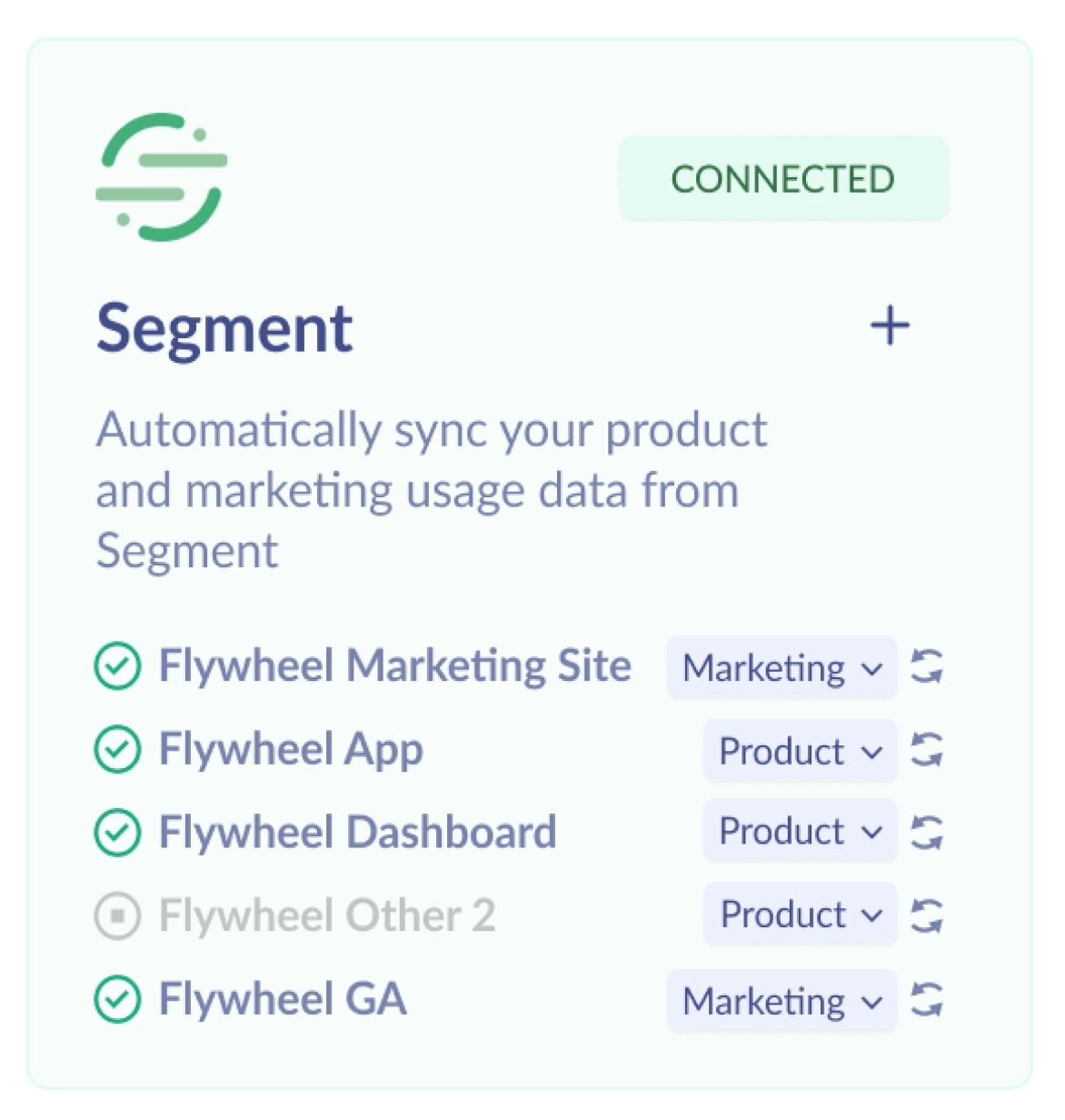
Selecting a source type
Now that you’ve connected Segment sources, you’ll need to select a source type for each one. This is key to making sure Flywheel categorizes your data correctly.
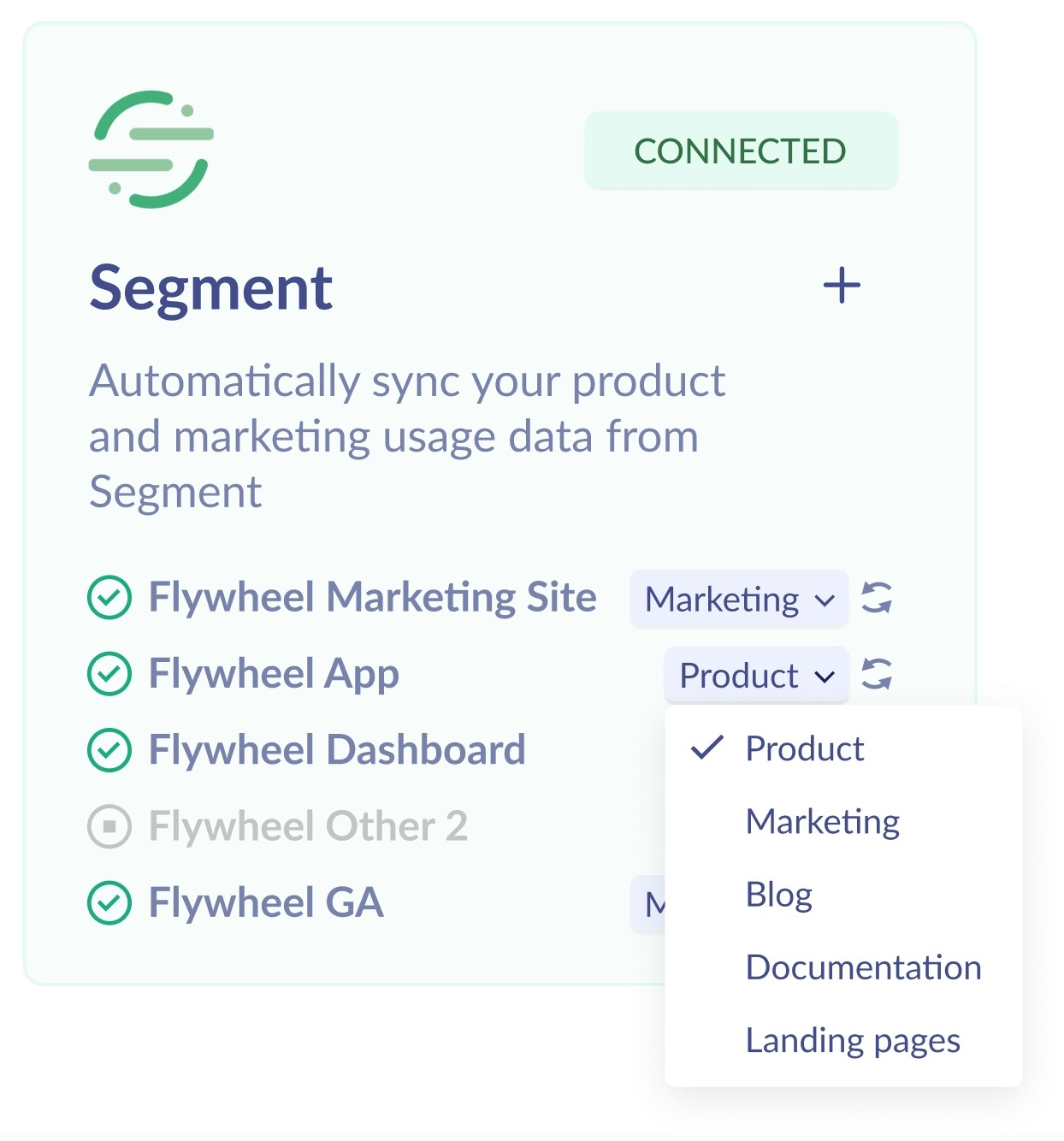
Choosing a source type has many implications. It will affect which Assets are created, how the Pacing algorithm is calibrated, and many other things. In addition, changing a source type is possible but not preferred. Changing a source type takes 15-30 minutes to correctly recategorize all of your data and may create erroneous results. Reach out to support if you’ve changed a source type and believe there are problems as a result.
Source type options
The following source type options are available today:
Product
Marketing
Blog
Documentation
Landing pages
Choosing the right source type
Product: If a Segment source is sending data from somewhere inside of your product, select Product as the source type. If your product uses multiple Segment sources, connect them all and mark all of them as Product.
Marketing: If a Segment source is sending data from a marketing website, choose Marketing. If your Blog or Docs are on your primary domain (e.g. www.soarwheel.com/blog or www.soarwheel.com/docs) select Marketing as the source type. Flywheel will automatically detect your blog and docs and create assets in the appropriate category.
Blog: If a Segment source is sending data from a dedicated subdomain for your Blog, such as blog.soarwheel.com, choose Blog.
Docs: If a Segment source is sending data from a dedicated subdomain for your Documentation, such as docs.soarwheel.com, choose Docs.
Landing pages: If a Segment source is sending data from a dedicated subdomain for your Landing pages, such as lp.soarwheel.com or try.soarwheel.com, choose Landing pages.
What happens after connecting Segment
Once you’ve connected your Segment sources and selected source types, Flywheel will immediately start to take action. Connecting Segment is enough for the majority of Flywheel to work correctly.
A few of the actions Flywheel will automatically take after connecting Segment are:
Connecting Contacts to Accounts
Associating Assets with the Contacts and Accounts who engage with them
Calculating metrics for the Dashboard
Creating the PLG Funnel in the Dashboard
Populating the Activity feed
Starting to calculate the Pacing algorithm
Creating goal event options for Goals
…and many other operations
Segment best practices for Flywheel
While Segment is very easy to start using, there are a few setup conditions to make it work best with Flywheel's system.
1. Identify your users
Using Segment's identify call will allow you to understand which users are on your website or are in your product. This is the most important aspect of setting up Segment. The best place to invoke the identify call is when a user signs up successfully or logs into your product. You can learn more about identify calls best practices in the Segment documentation below.
2. Start tracking events in your product
There are multiple ways to instrument your product with Segment ⏤ track events and page events are the most popular methods. The best way to get instant value from Flywheel is to use all of the events in the Segment B2B SaaS spec. Setting up these key events will make your Flywheel experience seamless.
Track events help you capture data based on user actions, such as clicking on a signup button or submitting a form. Utilizing track events gives your more granular ways of observing product adoption. Every company sets up track events in their own way, but we recommend tracking the most important milestones of the user journey. You can learn more about track events from the Segment docs below.
Page events are another event type and are the easiest to set up. Page events show you when a page loads inside your product or, if implemented on a marketing site, shows how a user browses your website. However, various browser ad blockers can impact page events which would result in lower quality data. For this reason we recommend to use mainly track events.
Re-syncing Segment sources
If you believe something needs updated with your Segment integration, you can re-integrate any source in a few clicks. Navigate to the Integrations page, then click on the rotating arrows next to the Segment source you’d like to re-integrate. Doing so will take you back to the same page you saw when originally integrating.
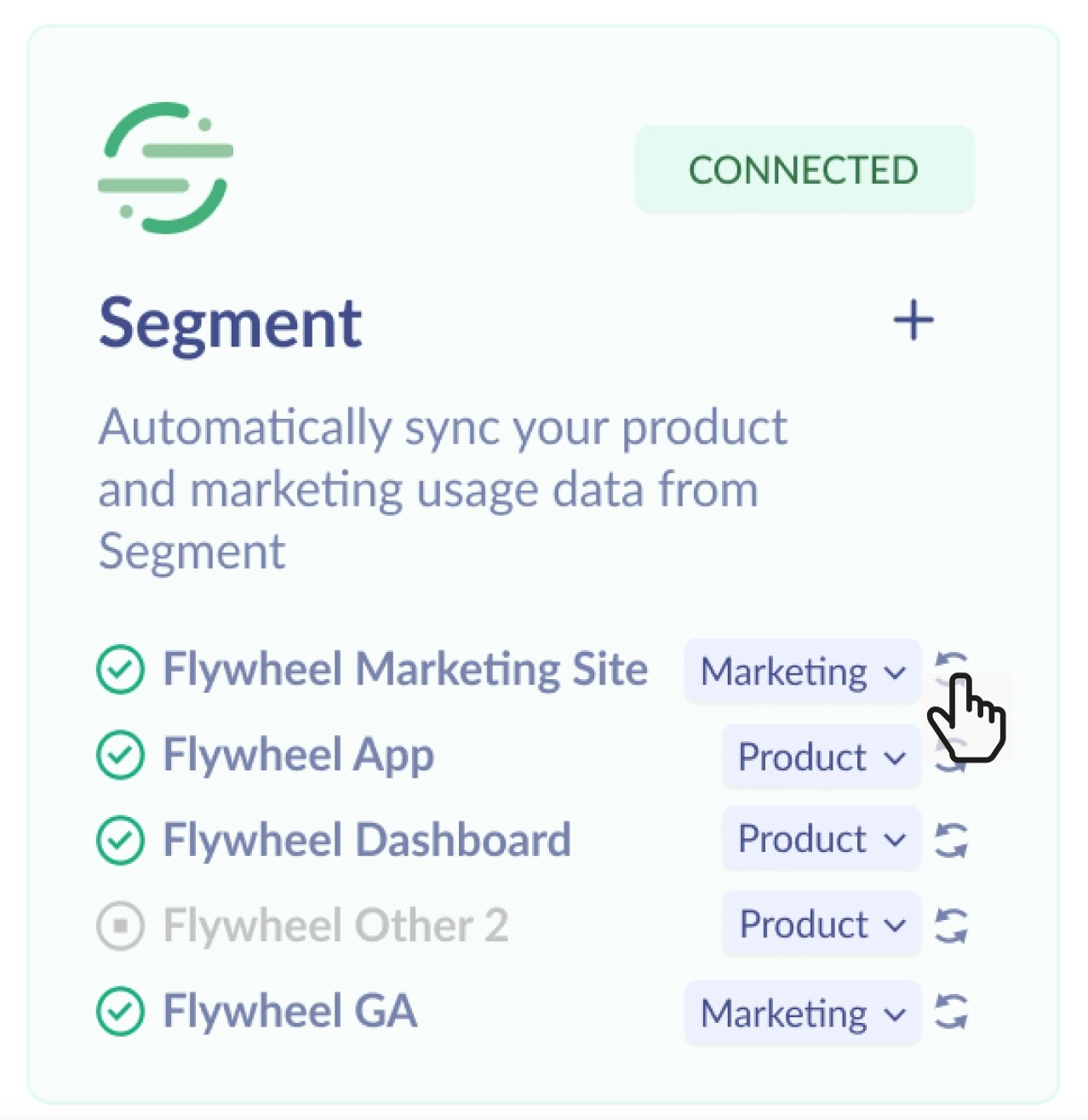
Choose the Segment source that you’d like to re-integrate with, then click Allow.
Testing Flywheel with staging data
If you’d like to test out Flywheel with staging data before connecting your production sources, you can do so using the same steps as a normal integration. Just sign into your staging or test Segment account when integrating and select the relevant sources.
When you’re ready to connect your production sources, simply integrate with those Segment sources and then reach out to support (via our Intercom chat or email at support@theflywheel.app). We’ll be in touch quickly to remove your staging connections.
Backfilling historical Segment data
If you have access to Segment Replay (available on Business Tier) or if you've stored your historical Segment data elsewhere, get in touch to get help with backfilling your Flywheel account.























